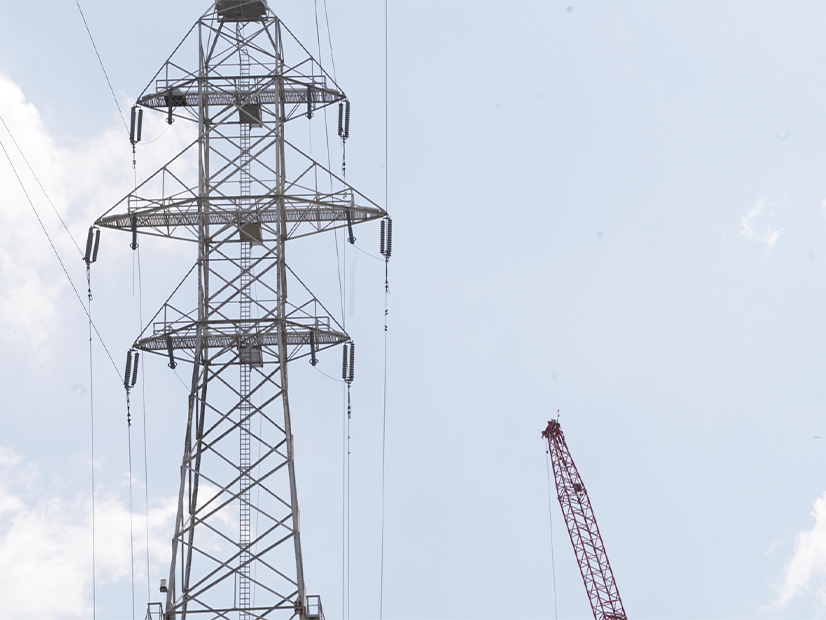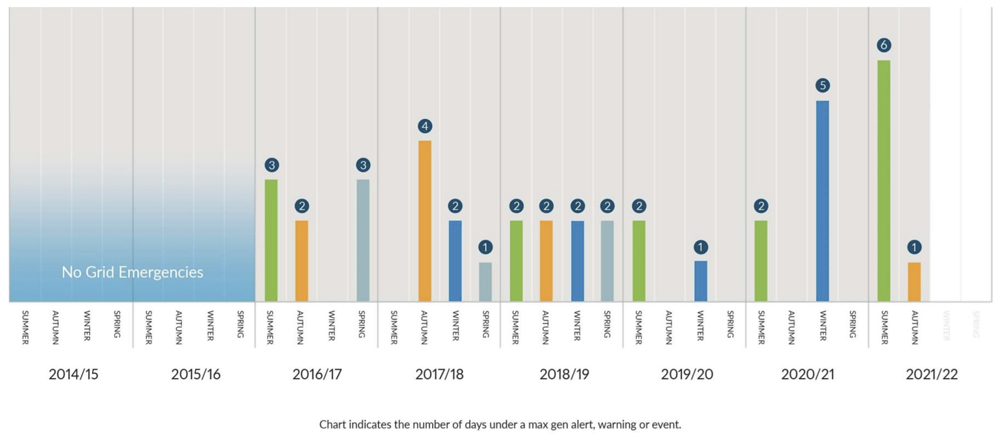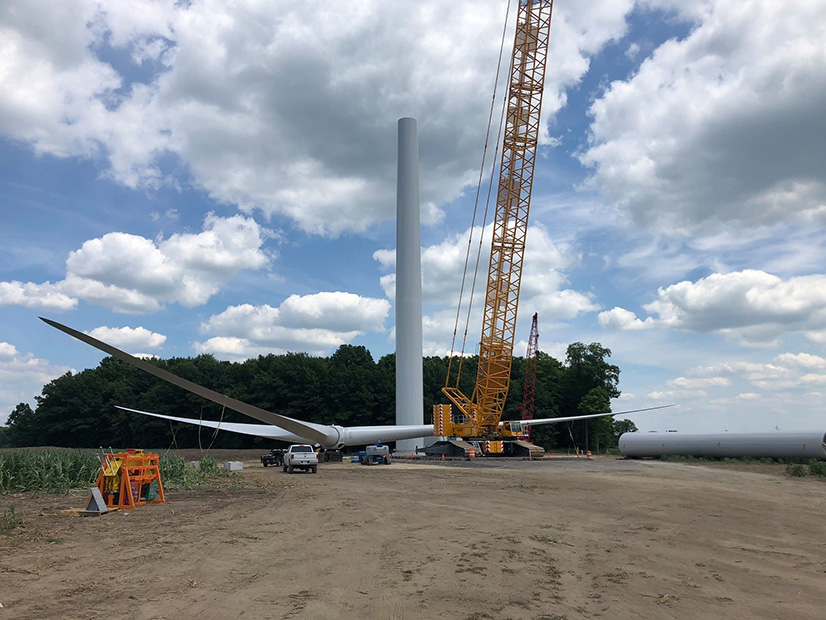As it heads into 2022, MISO‘s to-do list is dominated by getting major transmission built and crafting a seasonal capacity auction, direct responses to an increasingly renewable fleet and intensifying weather events.
“Don’t rest — or maybe you should rest — because we have a lot to do in the new year,” MISO CEO John Bear told stakeholders at the December board meeting, referencing the RTO’s work on its long-range transmission plan, seasonal capacity market, ongoing market platform replacement and dynamic transmission line ratings.
“I think we put MISO in a much, much better place than we were 12 months ago,” Bear said.
Seasonal Capacity on the Way
Though climate change is rarely mentioned in meetings by politically adverse MISO staff, the footprint was roiled by extreme weather in 2021, leading the RTO to conclude that a suite of resource adequacy solutions is needed for a fleet that’s either aging or has its output dictated by weather.
MISO Senior Director of Operations Planning J.T. Smith said it’s no longer surprising for the RTO to issue seasonal warnings and that it will find itself relying on non-firm imports from neighbors if outages are high when devastating cold snaps or heat domes strike.
“It’s not a new situation; it’s something we’ve reported out over the last couple of years,” Smith said in mid-December.
In February, an unprecedented winter storm forced load shed in MISO South. The RTO said the widespread artic blast gave it further justification to revise its capacity market. (See MISO: Wintry Weather Vindicates RA Changes.)
But the cold snap seemed tame in comparison to the havoc Hurricane Ida doled out to MISO South in late August. After the storm struck, MISO South stayed in conservative operations from Aug. 29 to Sept. 10 to allow for restoration. The hurricane cut through a significant transmission corridor, slashing ties from MISO into most of the Amite South and all of the Downstream of Gypsy — or metropolitan New Orleans — load pockets. MISO reported 233 transmission lines lost and 6.4 GW of generation knocked offline during the storm. (See Entergy Touts Restoration; NOLA Leaders Question Lack of Blackstart Service.)
 Hurricane Ida damage in New Orleans on Aug. 30 | Entergy
Hurricane Ida damage in New Orleans on Aug. 30 | Entergy
“We’re still suffering down there. A lot of recovery has to happen,” Louisiana Public Service Commissioner Lambert Boissiere said at an Entergy Regional State Committee meeting Nov. 9.
In all, MISO declared conservative operations instructions for 29 days in 2021, 13 of them from Ida. The remaining days were devoted to managing intense heat or cold.
MISO recently requested FERC approval of a four-season capacity auction and corresponding reserve margin targets. That design will accompany a new capacity accreditation based upon generators’ recent availability, especially during tight conditions. The RTO has also filed separately to create a minimum capacity obligation, in which a load-serving entity must demonstrate that at least 50% of the capacity required to meet their peak load is secured ahead of the voluntary capacity auction. (See FERC Grants Comment Extension for MISO Capacity Filing.) The pair of filings pending at FERC is all but certain to attract protests from generation owners that stand to have lower capacity credits.
The RTO said it will dedicate 2022 to furthering decisions on how its markets must change to accommodate more actively managed load and a more intermittent and varied resource fleet.
 Reconstruction of an Entergy tower after Hurricane Ida | Entergy
Reconstruction of an Entergy tower after Hurricane Ida | Entergy
In early December, MISO’s Jordan Bakke said the current market construct will gradually become less adept at serving load. He said local power imbalances will multiply, and MISO must be able to transport power for longer distances as more wind and solar generation is built in pockets around the footprint.
MISO has said that it expects wind and solar generation to reach 30% of its total load as early as 2026, straining the system and threatening reliability. It set a new, all-time wind output record of 22 GW on Nov. 12, with wind serving 29% of total load.
Winter Apprehension
MISO is steeling itself for a reserve shortage over the winter.
RTO staff over 2021 repeated that they must make more long-lead commitments and issue maximum generation warnings more frequently as surpluses disappear under even normal weather conditions throughout the year and the bulk electric system gets more complex to manage.
 Days under a maximum generation alert, warning or event in the last eight years | MISO
Days under a maximum generation alert, warning or event in the last eight years | MISO
The grid operator has said it will likely move up instructions for members to make public appeals for energy conservation earlier in its emergency process. It’s also collecting weekly winter fuel surveys through the end of February from about 400 generators to gauge natural gas and coal fuel security. (See MISO Sounds Alarm on Potential Winter Fuel Scarcity.)
Some generation owners have criticized the weekly survey fill-in as onerous. MISO staff say they need the information to assess reliability risks this winter.
“Given the potential upside of protecting the reliability of MISO and the downside of the administrative burden, I think the upside really outweighs [the downside]. … I really appreciate MISO as a proactive manager of this situation,” Minnesota Public Utilities Commission staff member Hwikwon Ham said at the Reliability Subcommittee’s meeting Dec. 10.
MISO has estimated through an internal survey that about 11 GW of coal generation is at risk of outage this winter because of fuel supply issues.
Addressing the winter worry, Michelle Bloodworth, CEO of coal trade group America’s Power, said MISO should “reconsider how far [the coal] fleet should be allowed to shrink.” She said some coal generation can temper the “inherent risks of an overreliance on natural gas and intermittent generation for electric generation.”
“Each coal plant that retires increases MISO’s exposure to fuel assurance risk,” Bloodworth said during MISO’s Board Week in mid-December.
But the coal exodus continues unabated.
Ameren Missouri (NYSE:AEE) announced Dec. 14 that it would accelerate the retirement of its coal-fired, 1.2-GW Rush Island Energy Center to 2024. The new retirement date coincides with a deadline to install new emissions controls imposed by the U.S. District Court for Eastern Missouri. Ameren’s 2020 integrated resource plan envisioned the plant running through the end of 2039.
“Potential grid stability and reliability impacts and other downstream effects must be evaluated, and those issues that are identified must be addressed,” Ameren noted in a Dec. 14 filing. Rush Island supports voltages in the St. Louis area.
NERC estimated that MISO faces a loss of more than 13 GW in capacity by 2024, comprising 10.5 GW of coal-fired generation and 2.4 GW of gas generation. If MISO doesn’t get replacements online soon, the footprint could suffer from a combined 560-MW shortfall, NERC concluded.
New generation is clamoring in MISO’s interconnection queue. In September, generation developers’ requests to join the system pushed the queue to a 153-GW high, shattering all previous records. (See MISO Warns Queue Won’t Stay at 150-GW High.)
Historically, MISO interconnects about a fifth of the generation projects that enter the queue. MISO executives have warned that much of the new generation won’t be able to connect to the system without substantial transmission expansion.
Long-range Planning in 2022 and Beyond
Despite that, some MISO players in 2021 staged a standoff over the necessity of a long-range transmission portfolio and how to divvy its costs. (See Tensions Boil over MISO South Attitudes on Long-range Transmission Planning.)
RTO leadership has said it could advance several billions in transmission expansion for Board of Directors approval over the next few years. So far, the RTO is only prepared to propose select projects located in MISO Midwest in late spring.
MISO plans to finish an initial cost allocation design in early 2022. The allocation prescribes a separate but equal postage stamp allocation to MISO Midwest and South. The design is based on MISO’s hypothesis that benefits from long-range projects built in either Midwest or South won’t cross its subregional transmission constraint. (See MISO to Test Long-range Tx Allocation Benefits.)
Some MISO members — especially environmental proponents — have suggested that Entergy (NYSE:ETR) is opposing major transmission expansion, hoping to stave off democratization of access to its system.
MISO also faces outside pressure to get transmission towers erected.
Former FERC Commissioner John Norris — who voted in 2013 to approve Entergy’s integration into MISO to mollify a Department of Justice investigation into the company’s anticompetitive behavior — has expressed regret at his vote and admonished Entergy and its regulators’ efforts to stall the RTO’s long-range transmission planning. He asked the MISO board to intervene in what he said was the RTO’s tendency to “yield to parochial interests.”
“I did not, nor did I suspect any of my colleagues at FERC, would have thought that by late 2021, no advancement in regional transmission planning and building would have taken place. At a minimum it would’ve seemed reasonable to assume that the north-to-south interconnection issue would’ve been addressed and resolved. Without the ability to transfer substantial amounts of electricity from north to south begs the question: What’s the point?” Norris told the board in September.
Norris said MISO’s lack of regional planning means it’s “already behind in its abilities to meet the needs for 2030 and beyond.”
“Given the increase in [maximum generation] events, one could argue that MISO is not even meeting the needs of today,” he added.




